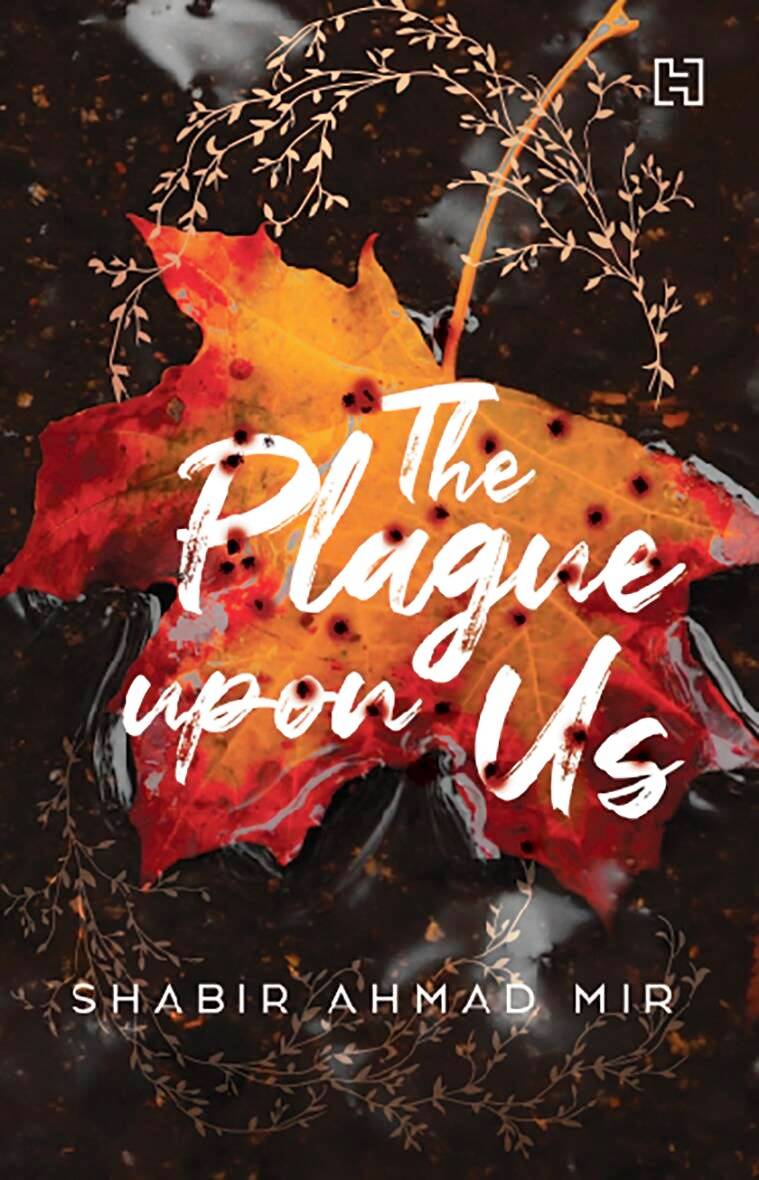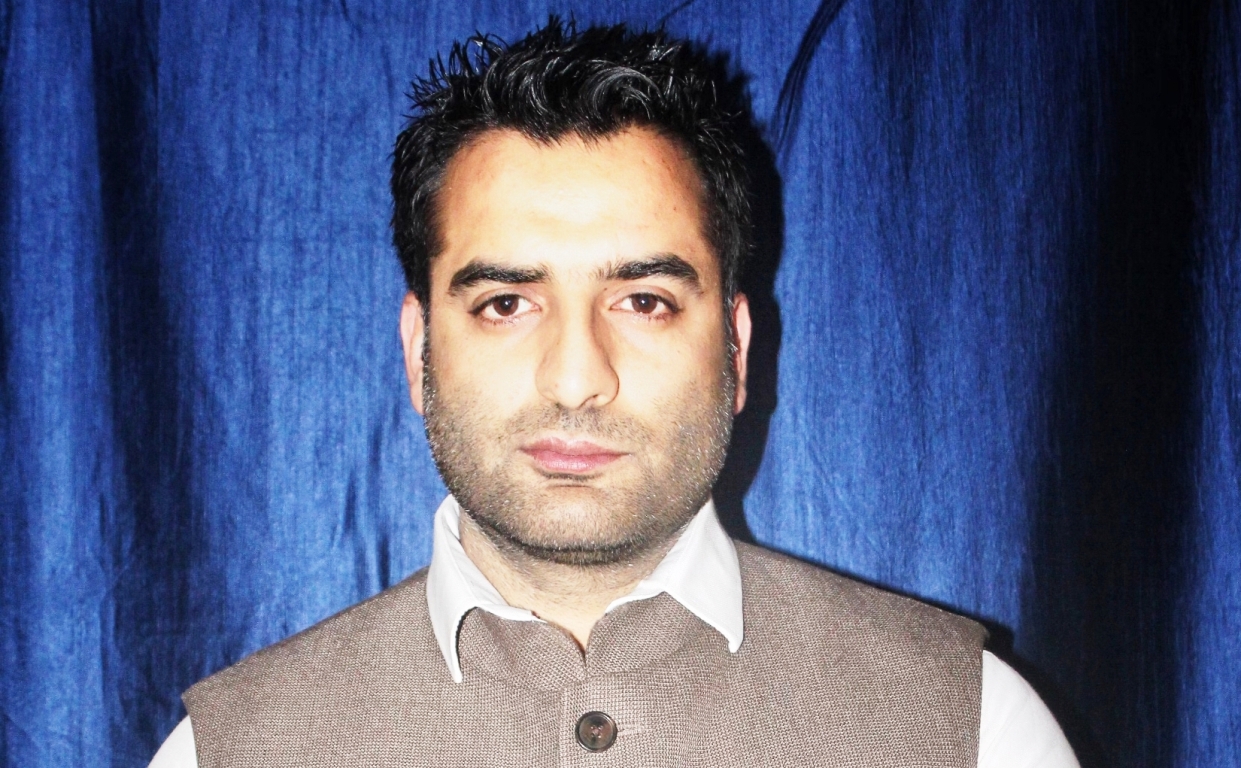Fascinated by stories throughout his life, the great moral booster was when Shabir A Mir’s short story The Djinn Who Fell From The Walnut Tree ended up being adjudged as the runner-up entry in a short story contest. Now his novel A Plague Upon Us, termed by Mirza Waheed as “a superb debut’ just released by the Hachette India is yet another bold attempt to relive the melancholic 1990’s that have changed Kashmir forever. In a brief interview, a day ahead of the book launch, Mir tells Kashmir Life how the indelible memories are reshaping a generation of new storytellers from the Kashmir Wasteland

The eponymous Plague of the title is the plague of misery and helplessness and hopelessness that we have been living with for decades now. It is the plague of our memory and of our witness to our own destruction.
KASHMIR LIFE: It all started with a short story. But wherefrom the short story came? What compelled you to write that short story – your surroundings or the pulls and pressures from within?
SHABIR AHMAD MIR (SAM): I would rather say it all started with stories. As far back as I can remember I have always loved stories. Even before I could read one I loved to listen to all kind of stories. Stories were my superpower, I could re-create and re-imagine the world inside me and outside me as and how I liked it. Somewhere along I started to write them down. I also wrote poetry, lots and lots of it during my school and college years. Then everything dried up till I joined Facebook. I started posting my poems and stories there and got some great ego-massaging response. And then one day I saw this submission call for a short-story competition called FON- South Asia Short Story Contest. There were some great names on the jury. My short story was shortlisted for the award and ended up as first runner-up eventually. That was the boost that I needed. And I started to write fiction on a more or less regular basis.
KL: Did the frequent and long shutdowns help you in attempting this novel?
SAM: The novel was written in the late summer and autumn of 2016. For months I had been bedridden as I tried to recuperate from corrective surgery to my knee while the Kashmir outside exploded on its streets and roads in response to the killing of Burhan Wani. I spent my days on my window watching young men and boys assemble outside on the main road, set up barricades, enforcing a civil curfew till police and paramilitary forces would arrive and the stone pelting would start. Pellets would be showered as would the tear gas and pepper gas. Occasionally there would be bullets too. The scene was almost the same every day and I was told that it was the same in almost every street of Kashmir. Months later as most of the young men and boys were either pellet-blinded or injured or simply taken away in the dead of the night I was still restricted to my window and now only an eerie desolation claimed the road outside.
Between the news and rumours that arrived everyday whole of Kashmir appeared to me like a wasteland and in my head, I began to roam its desolate and helpless streets like Tiresias in Eliot’s Wasteland. And from this, a short story shaped up wherein I tried to explore and re-enact the myth of Tiresias in the wasteland that Kashmir had been reduced to. But the story soon outgrew this premise.

Rather than Tiresias, the protagonist turned out into an Oedipus like figure driven into madness by sight and blindness, by guilt and nemesis, by powers and forces that were beyond him. This meant that I had to reclaim and re-engage with the past and all the demons that lay buried there. The memories of Ikhwan Raj, the stories of a cousin who had been driven into militancy by the repeated torture of an infamous Major, the murders of a number of relatives and neighbours at the hands of the ‘infamous’ unidentified gunmen… The power games and the politics of nineties which still is too complicated to be unravelled.
All this began to pour into my novel and by the time I had finished writing it in December 2016 I had sort of reclaimed my own past as well as the collective memory of our generation.
KL: Your novel is set in Kashmir. It is a maze of stories crisscrossing each other. Do these characters exist?
SAM: The novel is not a maze of crisscrossing stories. Structurally the novel consists of four stories or ‘four tales’ as they are called in the novel. Each story is at its core the same one but told from a different perspective as well as revealing a different aspect such that all the four stories fit in like pieces of a jigsaw puzzle and conjure up a single story. The four stories not only complement each other but they also complete each other. The idea being that you read the first tale and you feel like okay I got this story. Then you read the second tale and now you have a different understanding of the story, then you read the third tale and your understanding changes again, so fore and so on. Each tale challenges your understanding of what can be called as the Kashmir chaos.
The characters in this novel exist at an individual level and at a composite level. At an individual level, the attempt has been to create realistic portrayals of individuals that one can easily find in every day Kashmir. At the composite level, the attempt was to create characters that would be stereotypes as well as archetypes of the Kashmir tragedy. Thus a politician character is not just only a typical political character which a reader may co-relate to a historical one but it is at the same type the archetype of the politician in Kashmir. He is all politicians past and present and I believe the reader will identify how he is Mr A of X political party as well as Mr B of Y Political party. Each character is a stereotype as well as an archetype.
KL: The plague upon us came literally in the middle of a sort of plague. How the metaphor is linked or delinked to the larger contemporary Kashmir spanning over the last many decades?
SAM: The eponymous Plague of the title is the plague of misery and helplessness and hopelessness that we have been living with for decades now. It is the plague of our memory and of our witness to our own destruction.
KL: In the last more than 30 years, Kashmir emerged into space where ideas and stories of desperation, failure, sacrifice and love are abundant. How difficult it was to make a choice in favour of the protagonists you finally decided to work with?
SAM: There was no difficulty at all. Once I got the protagonist firmly planted in my head the other characters and situations just tumbled out from our history. The massacres and the massacred, the fake-encounters and the fake-encountered, the interrogation and the interrogators as well as interrogated’s, the Ikhwani as well as the militants – everything and everyone was there. Our history and our memory are full of them.
KL: How far is this observation correct that the situation in Kashmir has so many living instances of betrayal, belongingness, brutality and love that these defy or restrict the imagination of the creative minds in fiction?
SAM: I believe the first and foremost allegiance of any writer or artist must be towards his or her art. And within that allegiance, the artist has every right to react and respond to the socio-political space-time he finds himself or herself in. Once that is clear for an individual the living instances of betrayal, belongingness, brutality and love will only serve only as spurs for the creative mind to achieve new heights. But if it is the other way round wherein an artist degrades himself to a mere spokesperson, to a mere reactionary the living instance of betrayal, belongingness and brutality will invade his art and restrict it to mere propaganda or polemic.
KL: You have been writing for a long time now. How do you see the pace with which the new generation is mastering the art of telling their own stories?
SAM: More than writing, I have been reading for a long time now. And off late I have been reading a lot of local writers through informal as well as formal channels of publication. I have to thank social media for that. And I have found great promise in our new generation. I am simply amazed at the pace with which they are mastering the art of telling our own story. The only complaint I have is that the trend of instant gratification is somewhat holding back the evolution of our storytelling. Social media ‘likes’ and ‘shares’ are alright (infact quite required too) but to let the number and idea of ‘likes’ and ‘shares’ dictate one’s creative pursuits is suicidal.
KL: Who is the real Shabir Ahmad Mir, by the way, the author of the novel? Readers may want to know?
SAM: But the author is dead! Why should readers bother about me then? Throughout the publication process of this novel, there has been a conscious attempt to keep the focus on the novel and nothing else. Not even on the author. And I think I will continue with that hard work. This is one other thing that I find quite repulsive about our new generation. They tend to favour the artist over the art but I don’t like it personally. It may be a highly subjective opinion but that is how it is. That being said if someone really wants to know I think this much should suffice about me that I was born, brought up and live in a village of Kashmir. You might come across me anytime, anywhere. I am just another ordinary Kashmiri.















